In Ancient Egypt there were many practices in the funerary rite to grant the dead’s resurrection. The most represented, but also very unkown, was the Opening of the Mouth Ceremony.
The Opening of The Mouth Ceremony a group of gestures.
It was a group of practices for giving the life back to the deceased, which was assimilated to Osiris. It consisted in some gestures to restore vital faculties to the dead: breath, sight, eat, movement, sex…
Among these gestures the most common was the funerary priest (the sem riest or the lector priest) touching the face of the dead with he hand or with sacred objects.
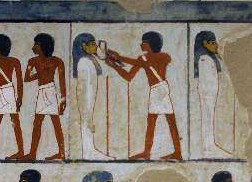
The priest usually used adzes, sacred sticks, vessels, knifes peseshkef, etc, for touching the mouth and the nostrils of the dead. But also the priest could touch with her finger the mouth of the deceased for opening it symbollically.
The Opening of the Mouth on the dead’s image.
Scenes of the tombs and on papyri (from the New Kingdom) show us how the sem priest did this gesture of touching the dead’s face on the image of the deceased.
Usually the sem priest performed this ceremony on the mummy. We have many examples, as for instance the scene of the Papyrus of Hunefer:
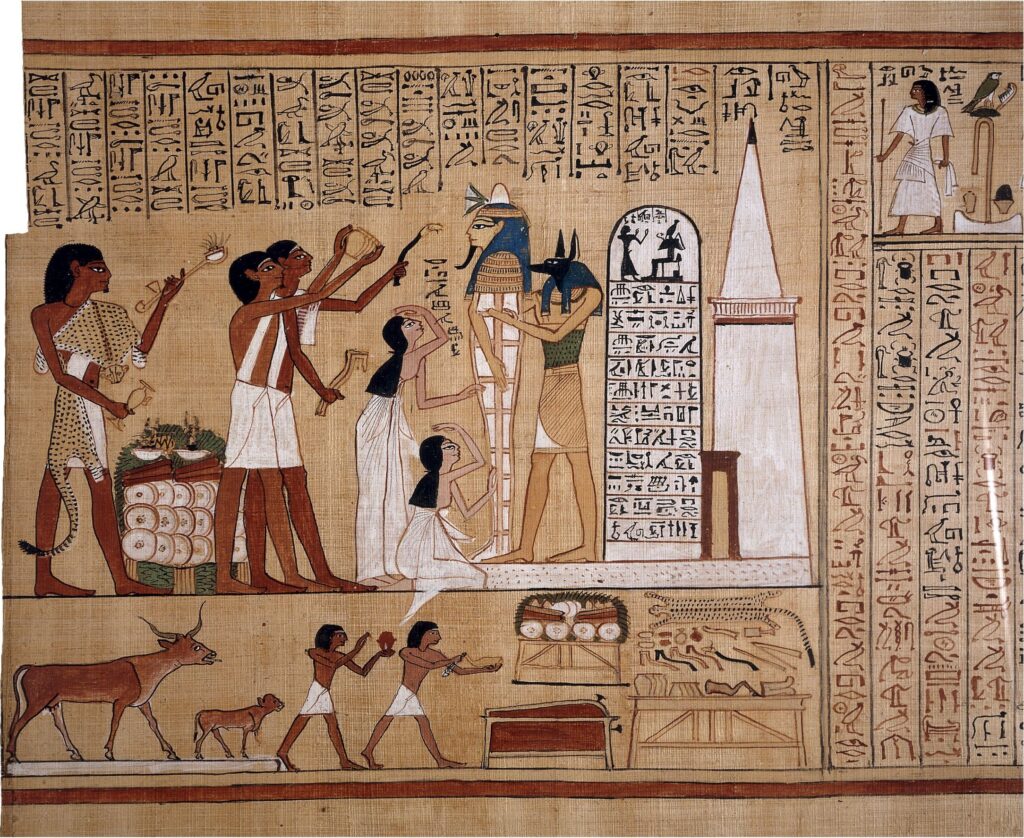
or the relief from the tomb of Renni in el-Kab:

Photo: www.osirisnet.net
Some other documents show the priest making the Opening of the Mouth Ceremony on the statue of the dead, as we see here in the tomb of Rekhmire:
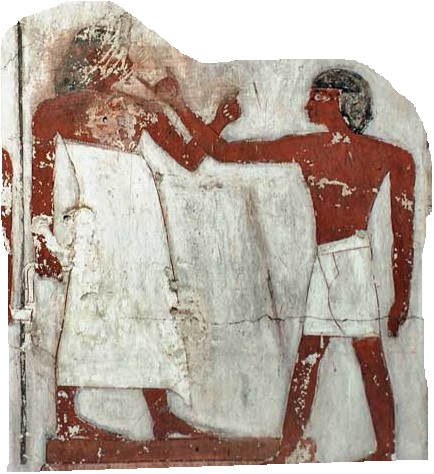
Due that the ceremony was to give life to a corpse it was normal to perform it on the mummy or on the effigy of the dead.
The Opening of The Mouth Ceremony on a “living image”.
However sometimes the Egyptian artist depicted the funerary priest performing this ceremony on the “living image” of the dead. This was the case for instance of the tomb of Userhat (TT56).
On the east wall of the first room the artist depicted a false door (the passing area from life to death). And at the right side of it, the lector priest makes two gestures of the Opening of the Mouth Ceremony on the seated image of Userhat.
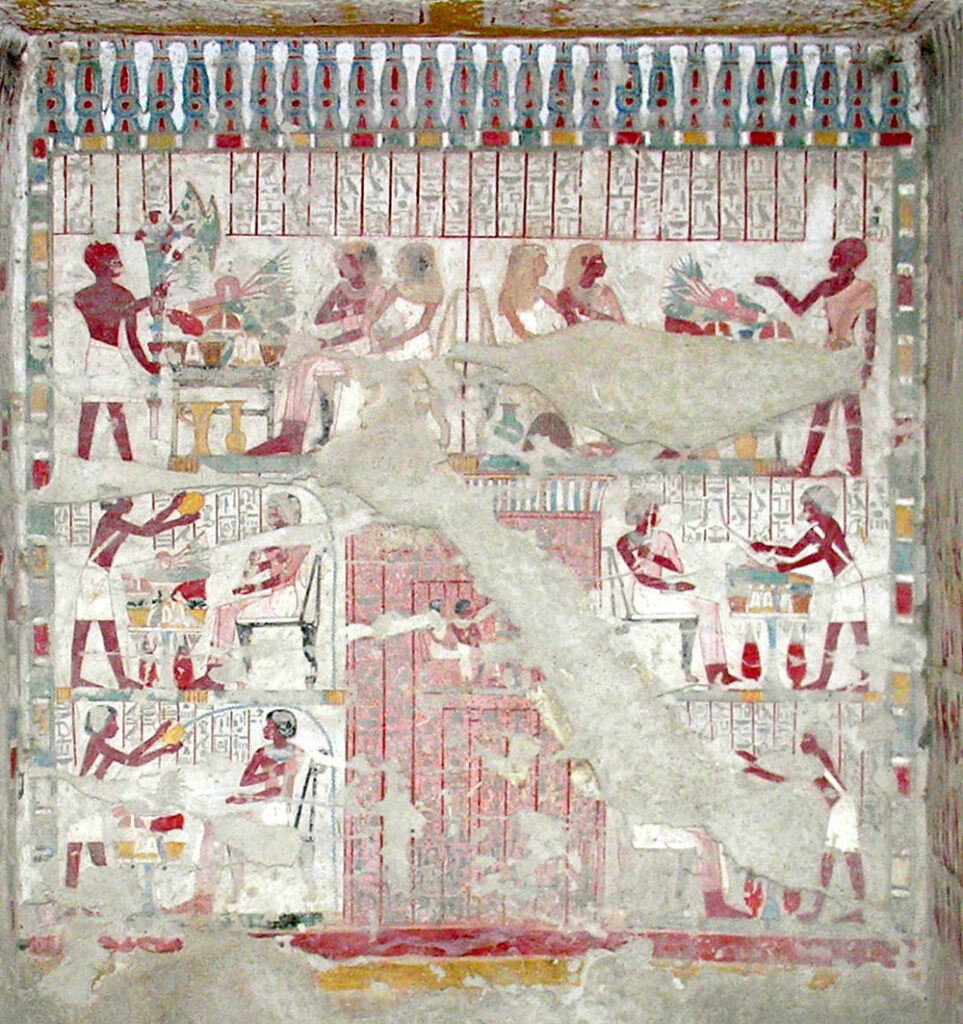
It was not odd to depict the priest burning incense or making a libation to the seated image of the dead (alone or the couple). In fact, the deceased on his seat receiving offering was a common icon of Egyptian art.
But in normal life the special rite for the deceased’s resurrection was made on the mummy or the effigy of the dead. And that is how the artist depicted those moments in the New Kingdom.
The Depictions of the Opening of the Mouth Ceremony in Ancient Egypt.
This was a “hidden” rite done “behind closed doors”. Just the people involved in it was there.
For that reason there are not too much scenes of it in the Egyptian iconography.
Old Kingdom.
Some references from the Old Kingdom show this ceremony with a group of images, but in a codified way. That is the case for instance of the tomb of Qar in Giza. Here just the officiants were depicted, not the deceased.
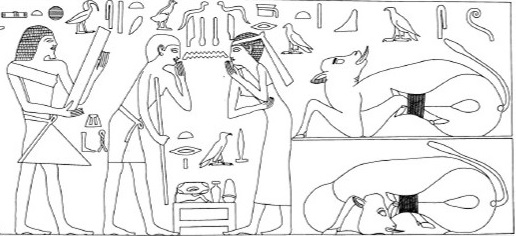
Middle Kingdom.
The tomb of Antefoqer dates from Dynasty XII. And in it the funerary rites are not represented, but “mentioned”. Among the scenes some of them shows the main characters of the Opening of the Mouth Ceremony: the two professional mourners, the sem priest and the lector priest. But no trace of specific gestures on the dead’s image.
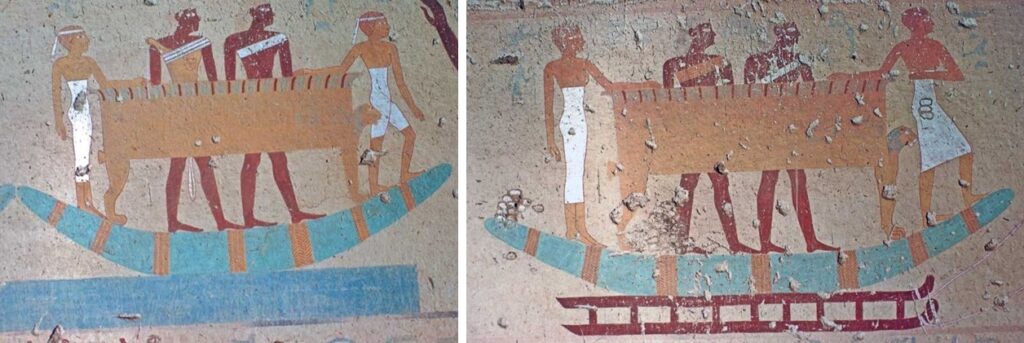
New Kingdom.
From the Second Intermediate Period things change. This rishi coffin here dates of Dynasties XVII-XVIII and we find on the left an image of funerary practices made in front of the mummy. The corpse is already an important element of this iconography and appears during the resurrection ceremony.
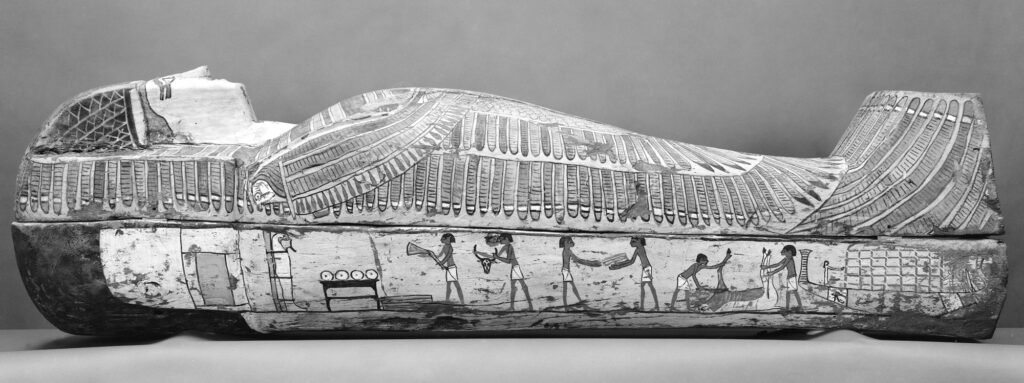
During the Dynasty XVIII, scenes of funeral practices proliferated, including those of the Opening of the Mouth Ceremony. The funerary priest could perform it on the mummy or the effigy,
However, in the reign of Amenhotep II, Userhat (or the artist responsible of the design of his tomb TT56) decided to depict this on his seated image.
And later on, in the Dynasty XX, Inerkha took the same decision for his tomb in Deir el-Medina.
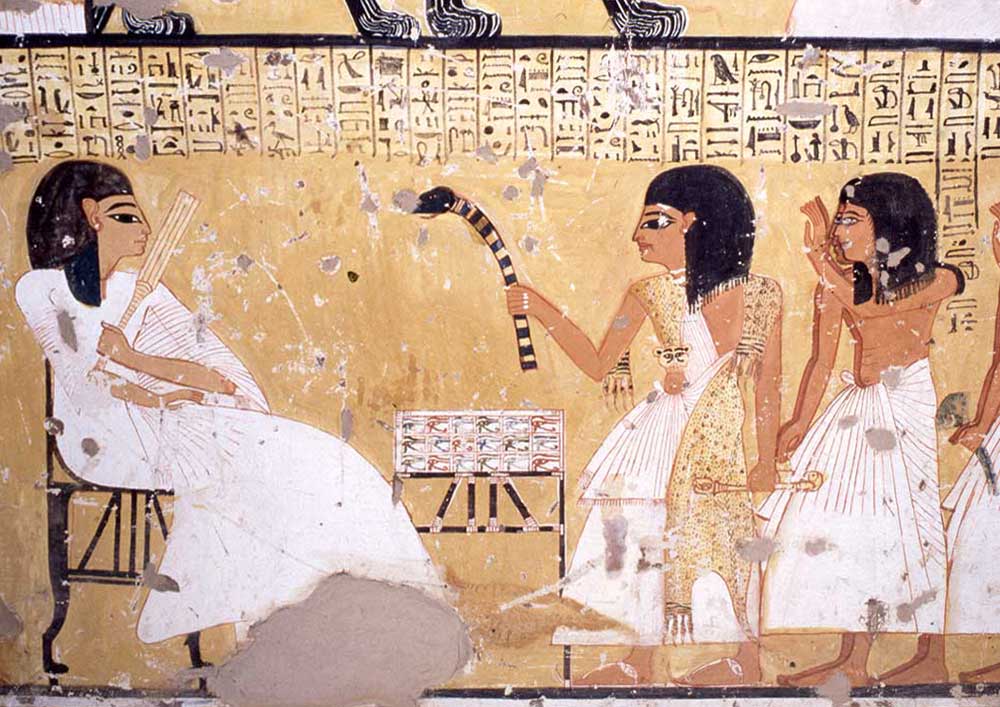
Doubts
The question to it is… why? was that a mistake in the tomb of Userhat? Had it a religious reason? Was that just an artistic option with little success?…